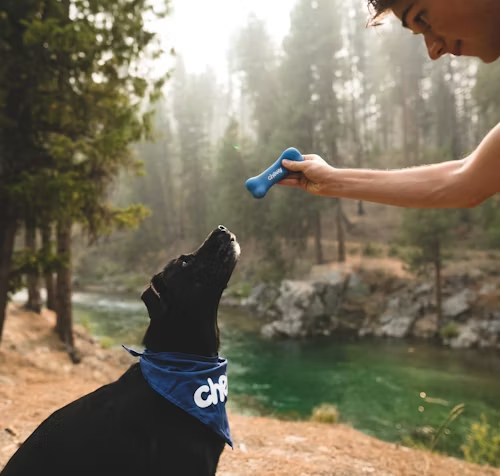If you’ve ever found your dog’s favorite toy or a half-eaten treat hidden under the couch cushions or buried in the backyard, you’re not alone. Many dogs have the instinctive urge to bury objects, leaving pet owners puzzled by this quirky behavior. Though it might seem odd or frustrating, this habit has deep evolutionary and psychological roots. Let’s explore the fascinating reasons why dogs bury things and offer tips to help manage or redirect the behavior.
1. Evolutionary Instincts: A Survival Strategy
The behavior of burying items dates back to dogs’ wild ancestors, where it was a critical survival tactic. Wild canines, such as wolves and foxes, would often bury surplus food to save it for later when food might be scarce. This behavior, known as caching, helped them store food away from predators and other scavengers.
Even though domesticated dogs have consistent access to food and no longer need to hunt, this ingrained survival instinct remains part of their natural behavior. It’s their way of ensuring they have a stash of resources, even if they don’t need it immediately.
2. Protection of Valuables
Dogs often view their favorite toys, bones, or chews as valuable possessions. Burying these items can be their way of “protecting” them from being taken by others — whether it’s a fellow dog, a human, or even an imagined threat. If your dog has a habit of burying their most cherished objects, it’s a sign that they highly value those items and are instinctively safeguarding them.
3. Emotional Comfort
For some dogs, burying things can be a coping mechanism to deal with stress, anxiety, or boredom. Much like a human may seek comfort in a particular activity, dogs may bury objects to soothe themselves. This behavior can also surface when a dog feels overwhelmed or insecure about their environment.
A new pet, moving to a new home, or a change in routine can all trigger burying behavior. In these cases, hiding toys or treats can be your dog’s way of creating a sense of control or security when they feel uncertain.
4. Mental Stimulation and Playfulness
Sometimes, dogs bury things simply because it’s fun. Burying and digging can provide dogs with mental stimulation and physical exercise, especially if they aren’t getting enough engagement from other activities. For some dogs, the act of burying itself is a playful outlet, and retrieving the object later is an added layer of enjoyment.
5. Hoarding Tendencies
Certain dog breeds, such as terriers and hounds, are more prone to burying things because they were historically bred for digging and hunting small animals. These dogs may have a higher tendency to hoard toys, bones, or food as part of their genetic makeup.
In these cases, the instinct to bury and hide is simply stronger, and your dog may exhibit these behaviors more frequently than other breeds. While hoarding can be amusing, it can also lead to unwanted behaviors like digging up your yard or hiding items in the house.
Tips for Pet Owners: How to Manage or Redirect Burying Behavior
If your dog’s burying habit is becoming a bit too much — especially if they’re digging up your yard or stashing items where you don’t want them — here are some tips to help manage or redirect the behavior:
1. Provide More Mental and Physical Stimulation
Boredom often leads to burying. Ensure your dog is getting enough exercise and mental stimulation through interactive toys, puzzle feeders, and games like fetch or hide-and-seek. Engaging activities can prevent your dog from seeking entertainment in burying.
2. Rotate Toys and Treats
To reduce the need to “protect” their items, try rotating your dog’s toys. This way, they won’t feel the need to hoard or bury a favorite toy since they know they’ll get it back eventually. Offering high-value treats less frequently can also minimize the urge to bury them for later.
3. Create a Designated Digging Area
If your dog loves to dig and bury things outdoors, consider creating a designated digging spot in your yard. You can fill it with sand or soft dirt and encourage your dog to bury toys or treats there. By giving them an approved outlet for their natural instincts, you can preserve the rest of your yard.
4. Address Stress or Anxiety
If burying behavior is triggered by stress or anxiety, focus on reducing those feelings. Establish a consistent routine, offer a safe space for your dog to retreat to when they feel overwhelmed, and ensure they have plenty of comforting items like blankets or chew toys.
5. Discourage Indoor Burying
If your dog is burying items indoors in inconvenient places (such as between couch cushions or under furniture), gently discourage this behavior by limiting their access to those areas. You can also redirect them to burying toys in their bed or crate, where it’s less disruptive.
6. Use Positive Reinforcement
When you catch your dog burying items in appropriate places, offer positive reinforcement with treats or praise. This helps reinforce that burying is acceptable in certain spots, like a designated digging area or their bed.
Final Thoughts
While your dog no longer needs to cache food for survival, their instincts still guide them to bury things for a variety of reasons — from protection to playfulness. Understanding the underlying causes of this behavior can help you manage it more effectively and ensure your dog feels secure and stimulated. Whether your pup is a natural-born digger or just looking for a bit of fun, giving them healthy outlets for their instincts will keep them happy and your home intact.











Leave a Reply